After some minutes of walk, I found a side street extending to the right. A quick glance let me know that various stores continued on seamlessly on both sides of the street. Curiosity prompted me to walk into the side street for exploration.
The street was also bustling. As if only that neighborhood had dropped out of Laos, people walked quickly with long strides, seeming fairly busy. I walked on further as was attracted by an open atmospher.
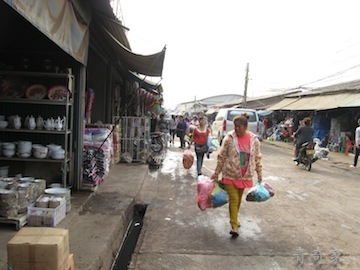
Side street with various stores
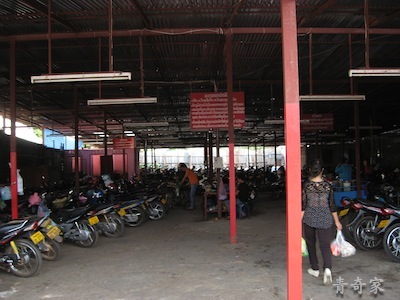
Motorcycle parking lot
I finally got to the dead end, where I saw an old building which were topped with bow-shaped roofs. It was a market! A later investigation advised me that the market was called Kua Din Market (in Lao, Talat Kua Din).
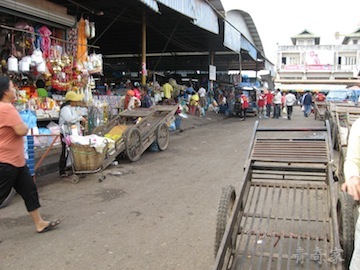
A market (left) appeared at the end of the street
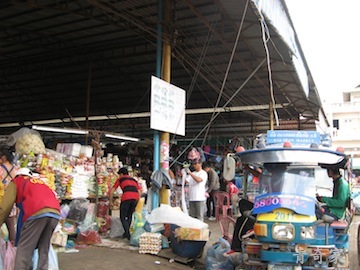
Entrance of the market. A local route bus was parked.
Passing by that roofed building, I first went into a right-hand area, where a lot of cheaply-structured stored, covered by blue tarpaulin sheets, were densely packed. I saw many vegitable and fruit stores on both sides of pathways. It was gloomy everywhere. This was because blue tarpaulin sheets, used as roofs, covered almost the entire pathways, blocking the sunlight from coming in. Only wider pathways allowed right and left overhead blue sheets to separate from each other, making space for the sunlight to fall. Although it was true that such blue sheets seemed unnecessary in mild weather as today, this structure of protection seemed suitable for both the sellers and the harvest, considering extraordinary amount of rainfall and sunlight in Vientiane.
A store-keeping woman was pouring some water on green vegetables to keep them looking fresh, as many do in every market in South East Asia.
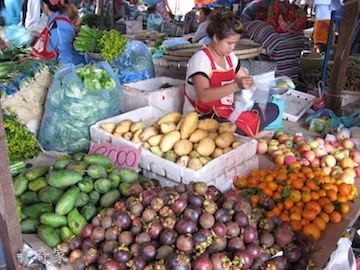
Nearest is mangosteen
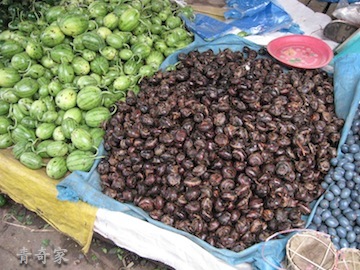
Arrowhead, probably
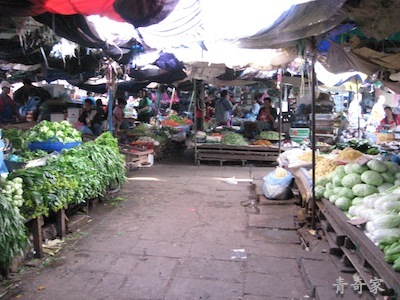
Blue-tarpaulin-covered vegetable market
Then I walked into the roofed building. Almost half of the floor was used for meat stores. In some stores, big blocks of meat were being cut up into smaller pieces by hand. Though such a scene is not so rare in this kind of markets, it was indeed impressive to see blocks of reddish meat placed at random on long tables under the lines of yellow naked light bulbs. The scene was in fact bright and favorable, and was showing practical, primitive aspects of traditional meat production.
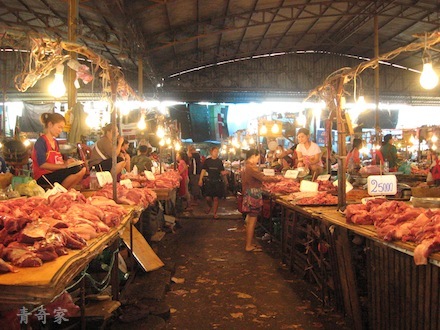
Meat stores
A Buddha statue stage had been built in front of the market building. The tower was splendid, and about 3 meters (9 feet) tall. I remembered that there was a store which selled prayer offerings in the market for the convenience of prayers. The section honoring the Buddha statue offered tranquility, which let me return to myself in the midst of busy crowd in the market.
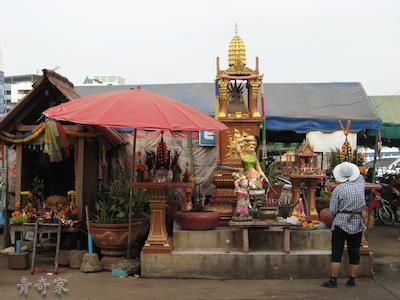
Buddha statue stage built in front of the market
Fresh markets seem almost the same around the world, especially in South East Asia. A market quietly located at the dead end of a side street, however, let me feel vital energies flowing through the center of a routine daily life, which can never be felt in well-organized tourist places.